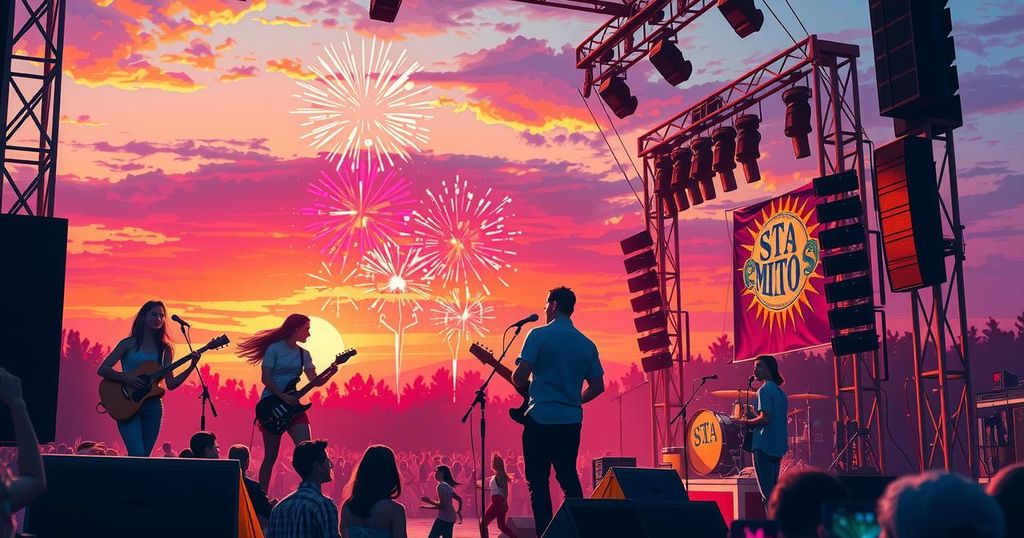Celebrity
ART, ASIA, ASSOCIATED PRESS, BOONE, BRAZIL, CAMP EAGLE, COLORADO, DAVE JURKOVICH, DAVID TERRY, ENTERTAINMENT, HISTORY, JU, LIFE, NEWS, NORTH AMERICA, PHOTOGRAPHY, RIO, SOCIAL MEDIA, SOUTH AMERICA, STAR, STARS AND STRIPES, TERRY, UNITED STATES, VIETNAM, WINCHESTER, WINCHESTER STAR
Fatima Alavi
0 Comments
Photographer Shares Iconic Peace Symbol Story with Vietnam Veteran
Carmen Rio sought to honor his former subordinate, Dave Jurkovich, who carved a peace symbol during the Vietnam War. After revealing Jurkovich’s identity, he learned of his death due to Agent Orange. Unexpectedly, David Terry, the photographer of the iconic image, was identified and recognized years later. Their meeting allowed for mutual acknowledgment and sharing of war experiences, illustrating the lasting impact of the Vietnam War.
On February 7, The Winchester Star featured Carmen Rio, a Winchester resident seeking to reconnect with Dave Jurkovich, his former subordinate during the Vietnam War. Jurkovich had famously etched a giant peace symbol into the Vietnamese landscape, which became the subject of an iconic photograph published in renowned magazines like Life and the New York Times.
Rio maintained Jurkovich’s anonymity during the war to protect them both from military repercussions. Recently, he decided to reveal Jurkovich’s identity to honor the soldier and facilitate a reunion, only to learn of his passing in 1999, likely due to health complications from Agent Orange exposure.
As the story of Jurkovich concluded in The Winchester Star on February 10, an unexpected turn occurred. David Terry, the photojournalist who captured the peace symbol image on May 8, 1971, discovered his name mentioned in the article while waiting for a flight in Texas. Terry had sold the photograph to the Associated Press for only $15 and rarely received credit for his work.
After the article mentioning Rio was published, an editor suggested contacting the AP to identify the photographer. Subsequently, AP Media Relations Manager Nicole Meir successfully located Terry’s name, allowing for an acknowledgment long overdue. Terry expressed his surprise at being recognized, submitting proof of his identity and a seldom-seen second photograph of the peace symbol in his email to The Star.
Rio and Scott Straub, a local who had aided in the search for Jurkovich, were excited to hear from Terry. To facilitate communication, Straub enlisted the help of a friend in Colorado Springs, Howard Bartner, to arrange a video conference between Rio and Terry on February 20. This meeting marked their first encounter.
Rio’s initial desire was to obtain Terry’s autograph. Straub successfully secured a vintage copy of Life magazine featuring Terry’s photograph, which he presented to the photographer during their exchange. Terry recounted how he wished to keep a copy upon its initial publication, but was refused by the AP.
During their conversation, Rio clarified that Jurkovich had utilized an MR-5 earth-moving equipment to create the peace symbol, which was significantly larger than the bulldozers depicted alongside the photograph in the magazine. Rio recounted his responsibilities as a lieutenant overseeing a unit of combat engineers, which included operations at Khe Sanh during the Vietnam War.
Terry shared his experiences capturing photographs during the Vietnam War, including moments spent documenting portions of Operation Lam Son 719 in Laos. Despite a media embargo, a South Vietnamese general intervened to allow Terry to board a helicopter to take photos in the area. Tragically, shortly after, a helicopter carrying several other well-known photographers was shot down, resulting in their deaths.
As their discussion turned towards the peace symbol photo, Terry described how he happened upon the image by chance, being instructed by soldiers on the helicopter to look out at the site located near Camp Eagle. He swiftly captured two frames, with only one sold to the AP, even though other photojournalists were eager to photograph the newly crafted symbol.
After selling the photograph, Terry expressed disappointment at the AP’s failure to credit his name, which they removed from all records upon reaching New York. He noted, “The funny thing is, the photos that I got paid big bucks for, nobody remembers. It was the one I sold for cheap.” Terry’s legacy now includes the iconic peace symbol image, emblematic of the anti-war sentiment during the Vietnam War.
Following his return from Vietnam, Terry continued his career in photojournalism in Thailand, covering significant historical events. Despite working independently, he found fulfillment in his travels and work, and reflected on the lasting significance of his photographs in preserving the memory of the Vietnam War. He is now retired and has remained active within veteran journalist communities, making several trips back to Vietnam for reunions.
The journey from anonymity to recognition for David Terry and his iconic photograph of the peace symbol in Vietnam underscores the often-overlooked narratives of war photographers. Carmen Rio’s efforts to honor Dave Jurkovich and reconnect with Terry highlight the importance of acknowledging those who contributed to significant historical moments. This story not only honors their legacies but also captures the enduring impact of the Vietnam War on personal lives and the collective memory of society.
Original Source: www.winchesterstar.com



Post Comment